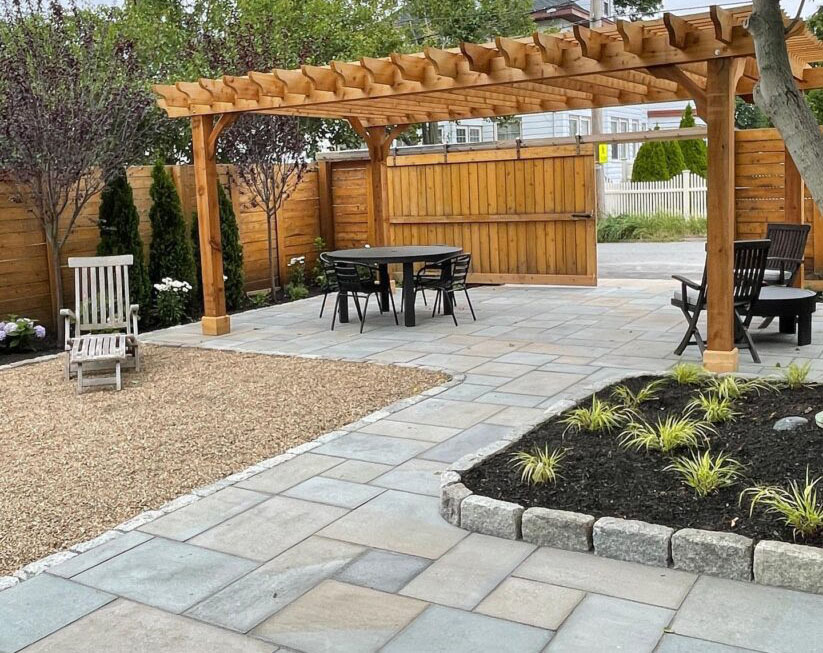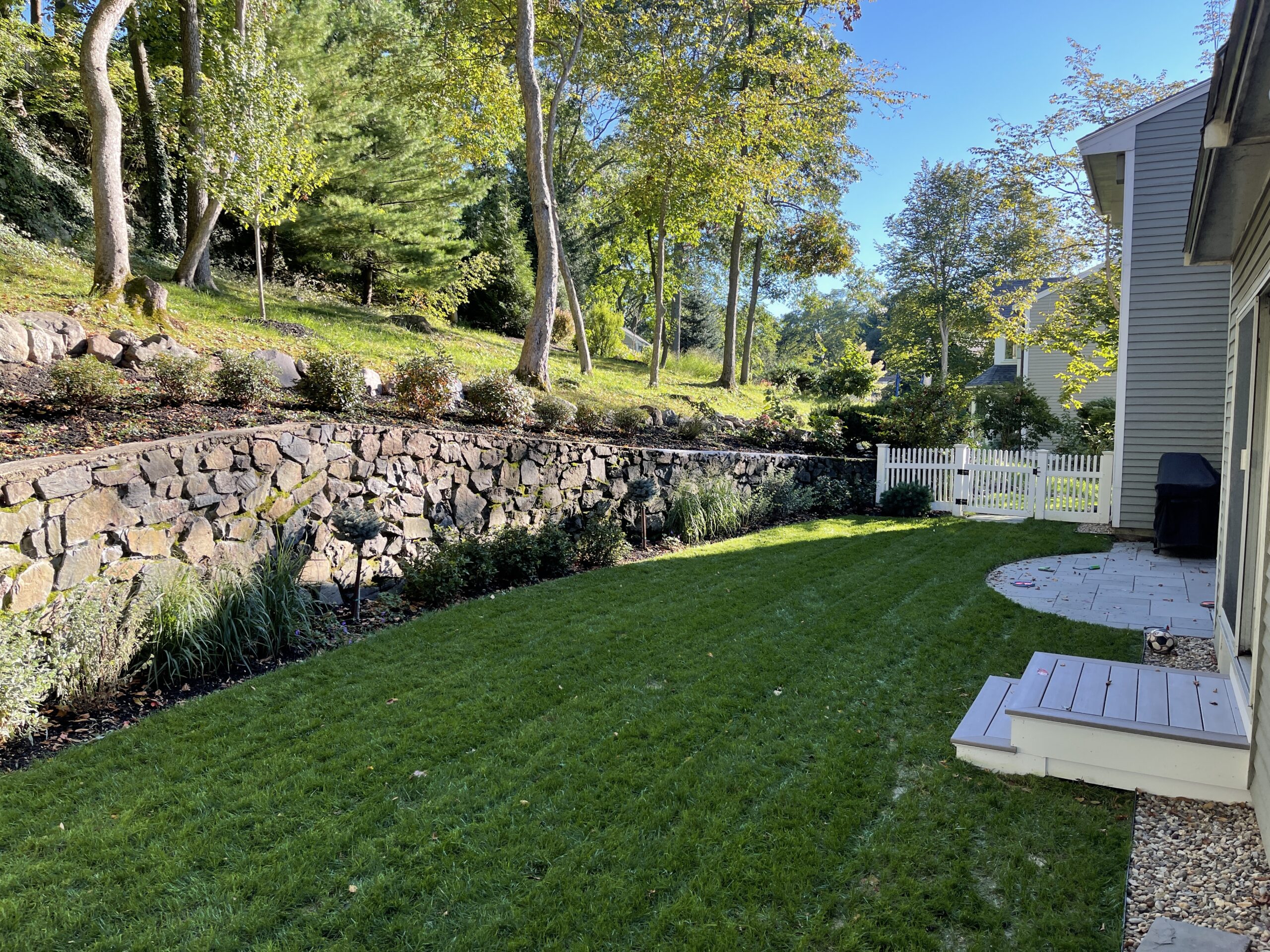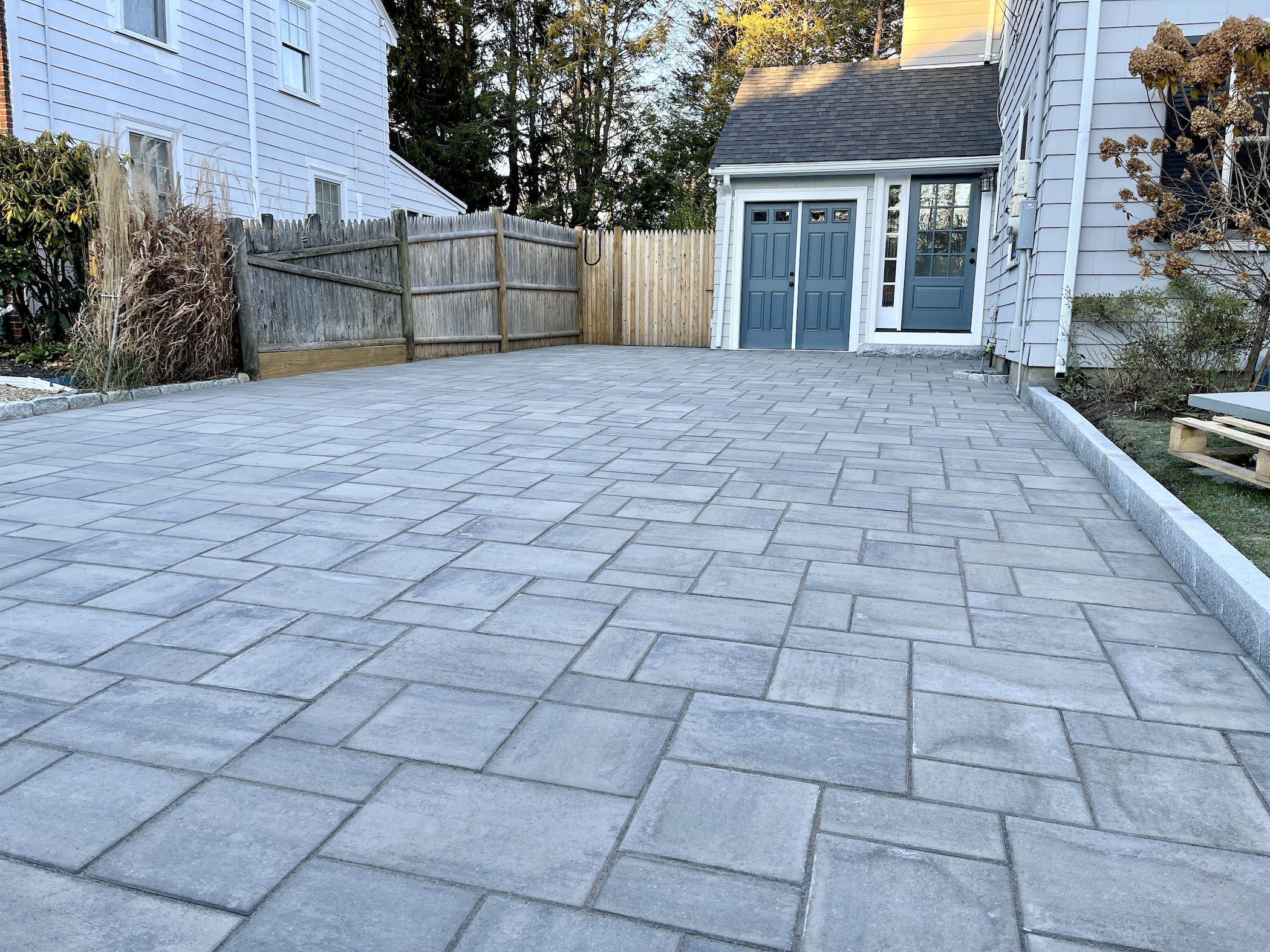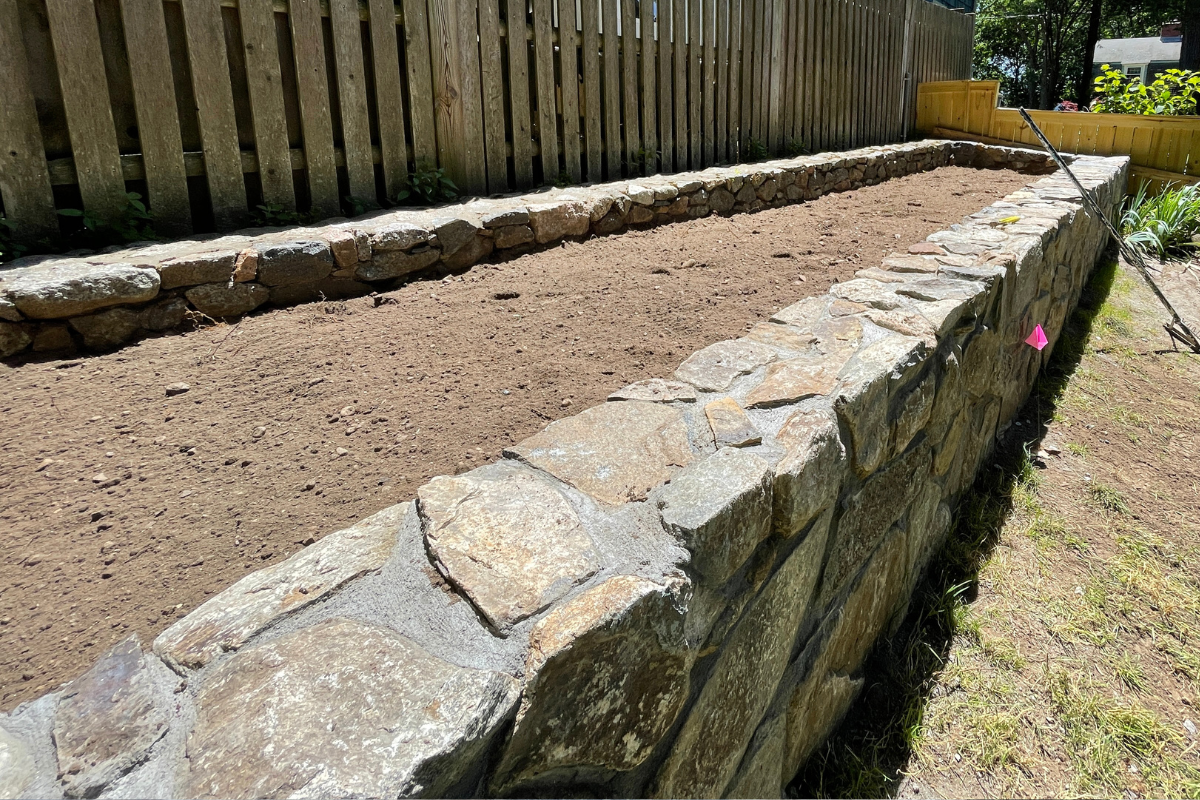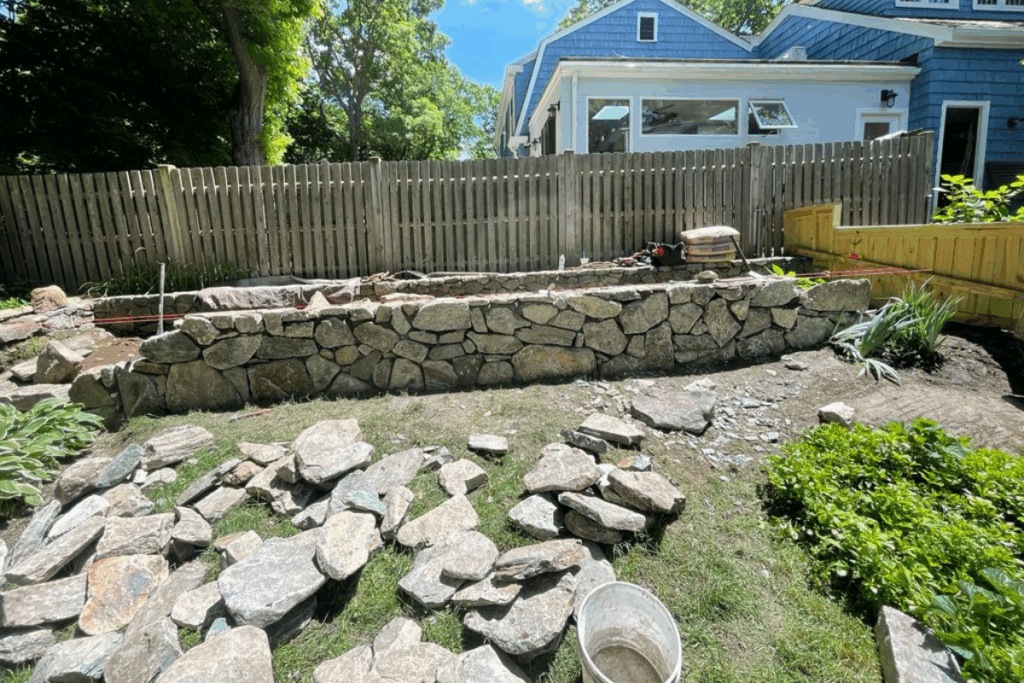
Stone walls are iconic features in Northeastern landscapes, seamlessly blending rustic charm with practical functionality. These timeless structures serve as property boundaries, garden enclosures, and aesthetic focal points, reflecting both natural beauty and architectural craftsmanship. However, the passage of time, combined with exposure to the elements, can take a toll on even the sturdiest of stone walls. Regular maintenance and timely repairs are essential to preserve their stability and appearance.
In this guide, we’ll explore the common issues stone walls face, explain why they occur, and provide effective restoration strategies to help homeowners maintain these cherished features.
Why Stone Walls Deteriorate
Stone walls may appear solid and unyielding, but they are vulnerable to various environmental and structural factors that lead to deterioration over time. Understanding these causes is the first step in preventing and addressing damage.
Freeze-Thaw Cycles
In regions with cold winters, like the Northeast, the freeze-thaw cycle is a major culprit in stone wall damage. Water seeps into tiny cracks and crevices in the stone or mortar. When temperatures drop, the water freezes and expands, widening the gaps. Over time, this repeated process weakens the structure and causes stones to loosen or mortar to crumble.
Soil Erosion
The foundation of a stone wall depends heavily on the stability of the surrounding soil. Shifting soil due to heavy rains, runoff, or poor drainage can destabilize the base of the wall. This can lead to stones shifting, leaning, or even the collapse of entire sections.
Moisture Damage
Excess moisture poses multiple risks to stone walls. It encourages the growth of moss, algae, and lichen, which can hold water against the stone or mortar, accelerating decay. Additionally, standing water or improper drainage around the wall can weaken the foundation and cause further instability.
Aging and Natural Wear
Stone walls built decades—or even centuries—ago may lack the modern techniques and materials that provide long-term durability. Over time, materials naturally weaken, and mortar can deteriorate, making older walls particularly vulnerable to damage.
Common Issues and Their Causes
A stone wall may show signs of wear and damage in various ways. Here are some of the most common problems homeowners encounter, along with their underlying causes:
Shifting Stones
Displaced stones are often the result of soil erosion, tree root intrusion, or physical impact. These shifts can compromise the structural integrity of the wall and create gaps that allow water to seep in.
Cracks and Gaps
Temperature changes, freeze-thaw cycles, and water infiltration can lead to cracks in the stone or mortar. These cracks weaken the wall’s overall stability and can expand if left unaddressed.
Moss and Algae Growth
While some homeowners appreciate the character moss adds to a stone wall, it comes with drawbacks. Moss retains moisture, which can accelerate the deterioration of both stone and mortar. Algae and lichen growth are similarly problematic, often appearing as discoloration or slimy patches on the wall’s surface.
Leaning or Collapsing Walls
A leaning wall is a clear sign of structural instability, often caused by a weak foundation, shifting soil, or extensive damage to the mortar. A collapsing section of the wall is a more severe outcome, typically requiring professional intervention.
Inspection and Maintenance
Routine inspection and maintenance are crucial for preserving the integrity of a stone wall. Regular checks can help identify small issues before they become significant problems.
What to Look For
During an inspection, pay attention to the following signs of damage:
- Loose, missing, or displaced stones.
- Cracks in the mortar or stone.
- Discoloration or white deposits, known as efflorescence, which indicate moisture issues.
- Moss, algae, or lichen growth on the wall’s surface.
It’s also important to keep the area around the wall clear of debris and overgrown vegetation. Plants growing too close to the wall can trap moisture or apply pressure to the stones, contributing to damage.
DIY Repairs
For minor issues, homeowners can often handle repairs themselves with the right tools and materials. These quick fixes can extend the life of your stone wall and prevent more extensive damage.
Resetting Loose Stones
To reset loose stones:
- Remove the displaced stone and clean both the stone and its original position on the wall.
- Apply fresh mortar to the base and sides of the stone.
- Place the stone back into position, ensuring it fits securely.
- Smooth the mortar and allow it to dry.
Filling Cracks
Cracks in the mortar or stone should be sealed promptly to prevent water infiltration:
- Use a masonry filler or a mixture of mortar and sand.
- Apply the filler with a trowel, smoothing it to match the wall’s texture.
Removing Moss and Algae
To remove moss and algae:
- Mix a solution of equal parts water and white vinegar.
- Scrub the affected areas gently with a stiff-bristled brush.
- Rinse with clean water and ensure the wall dries thoroughly.
Professional Restoration Techniques
While DIY repairs are suitable for minor issues, extensive damage or structural instability requires professional expertise. Skilled masons use specialized techniques to ensure durable and aesthetically pleasing results.
Rebuilding
If a section of the wall has collapsed or is severely leaning, rebuilding may be necessary. This involves dismantling the damaged area, stabilizing the foundation, and reconstructing the wall using original or new stones.
Repointing
Repointing restores the mortar between stones, which is often the first part of a wall to deteriorate. Fresh mortar strengthens the wall and improves its appearance, extending its lifespan significantly.
Drainage Solutions
To address erosion and moisture issues, professionals may install drainage systems near the wall. French drains or strategically placed gravel can direct water away, protecting the foundation from further damage.
Enhancing Stone Walls
Restoration projects also present opportunities to enhance the appearance and functionality of a stone wall.
Adding Capstones
Capstones are flat stones placed along the top of the wall. They provide a finished look while protecting the wall from water infiltration.
Incorporating Plants
Creeping plants like thyme or sedum can grow between stones, adding a natural and visually appealing element to the wall. These plants are hardy and require minimal maintenance.
Lighting and Decorative Features
Consider integrating outdoor lighting or decorative accents, such as metal brackets or carved stones, to highlight the wall’s character.
Preserving Your Stone Wall for the Future
Proper care ensures that stone walls remain durable and attractive for generations to come. Here are some long-term preservation tips:
- Seal the Wall
Apply a masonry sealant to repel water and prevent moisture damage. - Ensure Proper Drainage
Maintain good drainage around the wall to reduce the risk of soil erosion and water buildup.
Conclusion
Stone walls are enduring symbols of craftsmanship and natural beauty, adding charm and functionality to Northeastern landscapes. While they require regular maintenance and occasional repairs, these efforts are well worth the reward of preserving such a timeless feature.
By addressing issues like shifting stones, cracks, and moss growth promptly—and seeking professional help when needed—homeowners can ensure their stone walls remain sturdy and beautiful for years to come. With proper care and thoughtful restoration, these iconic structures can continue to enhance your

